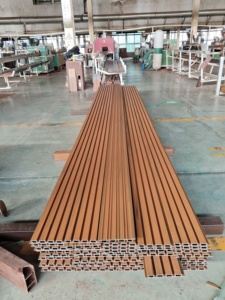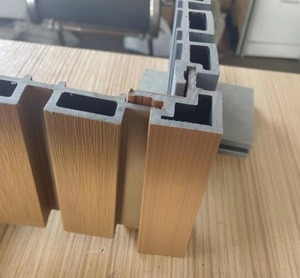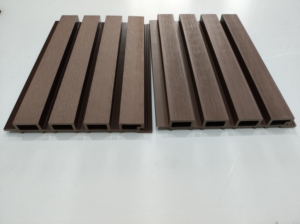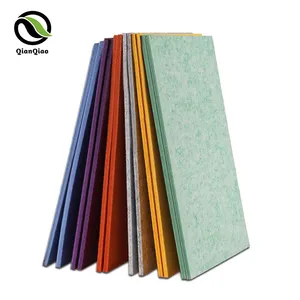
All categories
Featured selections
Trade Assurance
Buyer Central
Help Center
Get the app
Become a supplier

(142157 products available)












































Fabric panels are decorative elements that can be used in various ways. They are made by stretching or attaching cloth to a frame or backing. Here are the different types of fabric panels:
Acoustic Panels
These are fabric panels that are specifically used to reduce sound echoes in a room. They are made with foam or fabric that is good at absorbing sound. Acoustic fabric panels are commonly put on walls and sometimes on ceilings. They come in different colors and designs that can still make a room look nice even as they serve their main purpose of reducing noise.
Artwork Panels
Artwork fabric panels are decorative pieces of art. They have images or patterns printed on them. These fabric panels are primarily used for decoration and can be found in many different places, such as homes, offices, hotels, and shops. They come in different styles, colors, and sizes so that they can fit into different spaces and match various themes.
Wall Panels
Fabric wall panels are basically decorative elements for walls. They are made with cloth, wood, or foam. The primary purpose of wall panels is to make a wall look good. They are fixed directly onto the wall and come in different styles, colors, patterns, and textures so that they can match the style of the room they are placed in.
Artistic Panels
These fabric panels are a form of wall hanging that features intricate designs on them. They come in different styles, ranging from traditional and cultural to modern and abstract. Artistic fabric panels are used to decorate walls, adding beauty and elegance to the space.
Folding Panels
Folding fabric panels are movable wall hangings that can be folded when not in use. They are made with a frame that has fabric attached to it. The main use of folding panels is to divide a room into separate spaces for different uses.
Fabric panels are a versatile and effective solution for improving the aesthetics and functionality of a space. Their features are as follows:
Sound Absorption
Fabric panels control noise levels in a room by minimizing echoes and reducing sound. They absorb sound waves, especially in areas where soft furnishings and carpets are not available. These panels are essential in conference rooms, open office spaces, theaters, and auditoriums. They create a more pleasant and quieter environment, making communication clearer.
Sound Diffusion
Some fabric panels are designed to spread sound evenly throughout the room. These panels improve the overall quality of the sound in the room. Sound diffusion fabric panels are important in performance spaces and music studios. They ensure balance and natural sound without excessive echoes or dead spots.
Thermal Insulation
Fabric panels control temperature in a room. They minimize heat loss in colder months and reduce heat gain during warmer months. Thermal fabric panels improve the energy efficiency of a space. This reduces reliance on heating and cooling systems. These panels are also environmentally friendly and reduce energy costs.
Fire Resistance
Some fabric panels are treated with fire retardant chemicals. This makes the fabric comply with building codes and safety regulations. Fire-resistant fabric panels improve the safety of interiors. They offer crucial protection against the spread of flames in case of accidents.
Aesthetic Appeal
Fabric panels come in different designs, colors, textures, and patterns. This allows customization to meet the functional needs and interior style of any space. Aesthetic fabric panels enhance the visual impact of residential and commercial interiors. They create a warm, inviting atmosphere and a sense of luxury.
Modular Design
Fabric panels come in pre-designed sizes and shapes that can be easily assembled and installed. This feature fabric panels are popular for DIY projects. Modular design also allows for easy replacement of damaged sections. Additionally, fabric panels can be expanded to improve functionality and meet changing needs.
Eco-Friendly Materials
Some fabric panels are made from sustainable materials like recycled polyester or natural fibers. These materials have low VOC emissions. Eco-friendly fabric panels appeal to environmentally conscious architects and clients. They improve indoor air quality and minimize environmental impact.
Fabric panels are used in a variety of settings and scenarios. Here are some common application scenarios:
Corporate Environments
Fabric panels are used to create office cubicles and partitions. They provide soundproofing and ensure privacy among employees. They are also used to cover walls and ceilings in meeting rooms. This improves acoustics and creates a professional ambiance. In executive offices, fabric panels are used as wall art and to create custom wall coverings. This adds a touch of luxury and minimises noise distractions.
Commercial Spaces
Fabric panels are used on the walls of hotels, restaurants and retail stores. This adds elegance and improves sound. In restaurants, fabric panels are sometimes used on the ceiling to improve acoustics. In retail stores, fabric panels are used as decorative walls to display products. They can also be used as backdrops for fashion items.
Educational Institutions
Fabric panels are used in classrooms, auditoriums and libraries. They improve sound quality and create a conducive learning environment. In libraries and study halls, fabric panels are used on walls and ceilings to reduce echoes and noise. In auditoriums, they are used on walls and ceilings to trap sound waves hence improving clarity.
Healthcare Facilities
In hospitals, fabric panels are used on the walls of patient rooms. This creates a calm and serene environment for patients. They are also used in conference rooms and waiting areas. Fabric panels improve acoustics and create a soothing ambience for patients. They are also used in operating rooms and examination rooms. This provides a clean and sterile covering.
Residential Spaces
Fabric panels are used as decorative wall art in living rooms, bedrooms and dining areas. They come in different designs and patterns that enhance the beauty of an interior space. Fabric panels are also used on the headboards of beds. They add a touch of elegance and improve acoustics. They are also used to cover the walls of home theatres and media rooms. This improves sound quality and adds a touch of class.
Entertainment Spaces
These include concert halls, recording studios, home theatres and cinema halls. Fabric panels are used on walls and ceilings to absorb sound waves. This reduces echoes and improves sound quality. In home theatres, fabric panels are used to cover walls, ceilings and even speakers. This creates a cinematic experience.
When choosing fabric panels, there are several factors that retailers should consider to ensure that customers will be satisfied with their purchase. Here are some of them:
Functionality
When it comes to fabric panel uses, retailers should stock up panels suitable for various needs. This includes decorative fabric wall panels that improve aesthetics and functional acoustic fabric panels for sound dampening. Additionally, customers who want to use fabric panels for furniture upholstery or DIY projects will need fabric panels in different sizes, textures and colors. Therefore, retailers should choose fabric panels with different functionalities to meet diverse customer needs.
Material Durability and Quality
Retailers should select fabric panels made from high quality and durable fabrics. This ensures longevity for customers who intend to use the panels for walls and furniture. They should choose fabric panels from materials such as polyester, cotton and linen. Additionally, they should ensure the panels have durable backing materials.
Design and Aesthetics
Retailers should choose fabric panels with various designs to cater to customers' preferences and needs. For instance, they should select fabric panels with solid colors, prints and patterns. Also, they should choose fabric panels with different textures such as jacquard, linen and velvet. These additional designs will enable retailers to supply fabric panels suitable for various interior spaces, from modern to traditional spaces.
Easy Maintenance
Retailers should choose fabric panels that are easy to clean and maintain. They can choose panels made from stain resistant or washable fabrics. This is a very important factor especially for customers who are installing the fabric panels in high traffic areas or spaces with frequent spills.
Customization Options
Normally, some customers will prefer to have customized fabric panels that will meet their unique requirements. Retailers should ensure they have access to fabric panels with different customization options. This will allow customers to get fabric panels in their desired sizes, shapes and fabrics.
Sustainability
Retailers should consider shopping for fabric panels that are made from sustainable and eco-friendly practices. They can look for certifications such as eco-friendly fabric panels.
Q: What are fabric wall panels called?
A: Fabric wall panels are known as textile or fabric acoustic panels. These panels consist of a foam core covered with fabric, designed primarily to reduce noise and improve acoustics in a room.
Q: What are the disadvantages of fabric wall panels?
A: While fabric wall panels offer several benefits, there are some potential drawbacks to consider. These may include lower durability, higher maintenance requirements, and limited customization options.
Q: Are fabric panels good for walls?
A: Fabric panels can be a great addition to walls, particularly when it comes to enhancing aesthetics and improving acoustics. However, proper installation and panel selection are key to achieving the desired benefits.
Q: Do fabric panels help with soundproofing?
A: Fabric panels can help with soundproofing by reducing the amount of sound that echoes or reverberates within a room. They absorb sound waves, making rooms feel quieter and improving the clarity of voices and music.
Q: What is the purpose of fabric panels?
A: The primary purpose of fabric panels is to enhance a room's aesthetic appeal and acoustics. They serve as decorative elements that can absorb sound, reduce noise, and improve the overall acoustic comfort of a space.